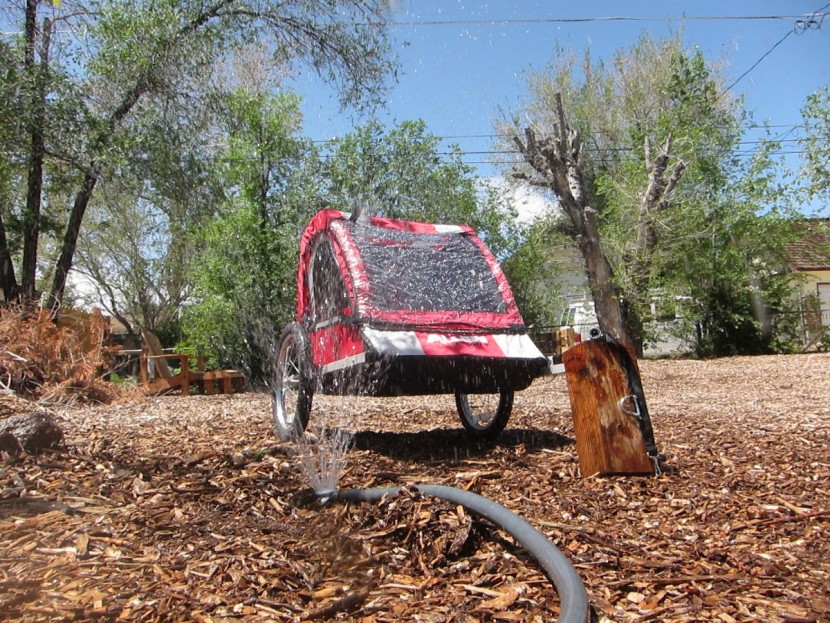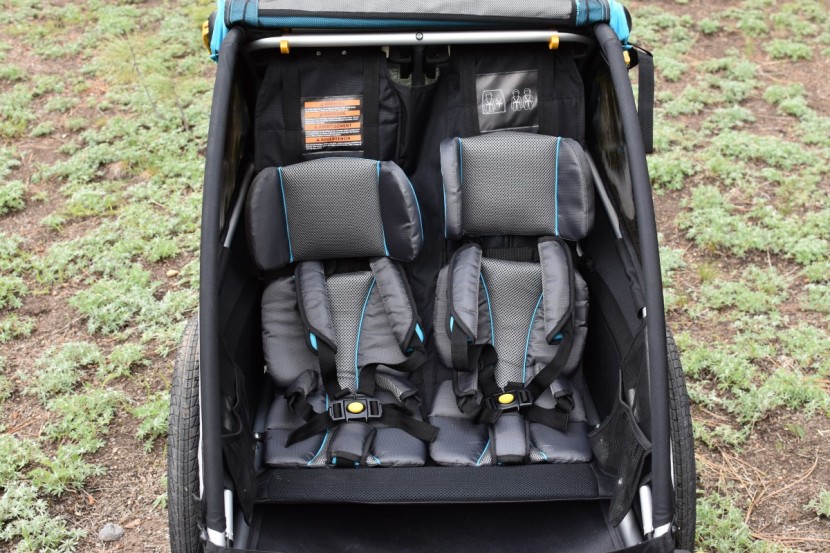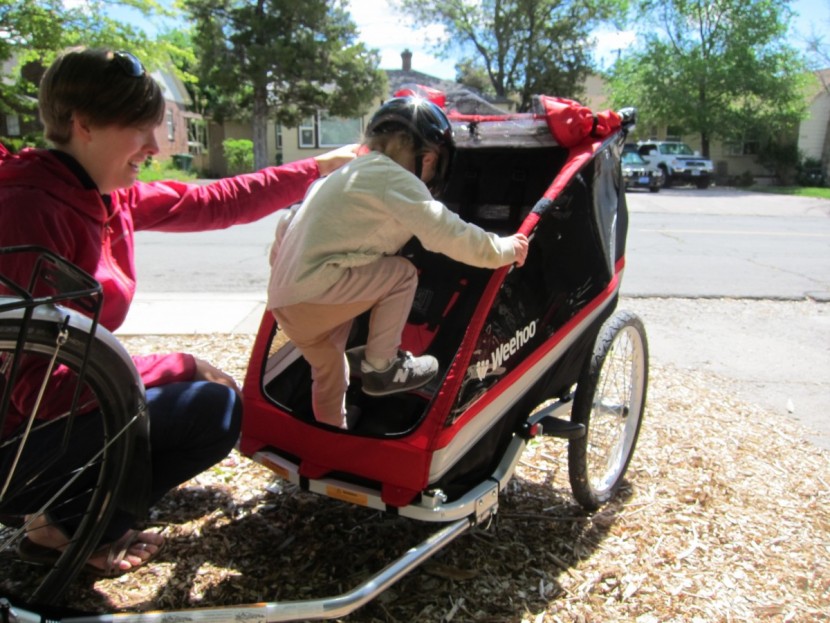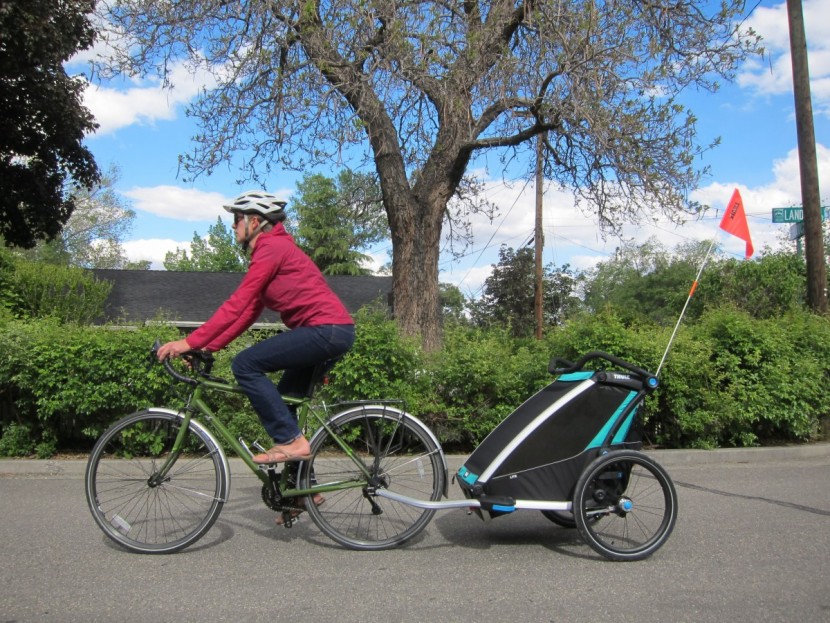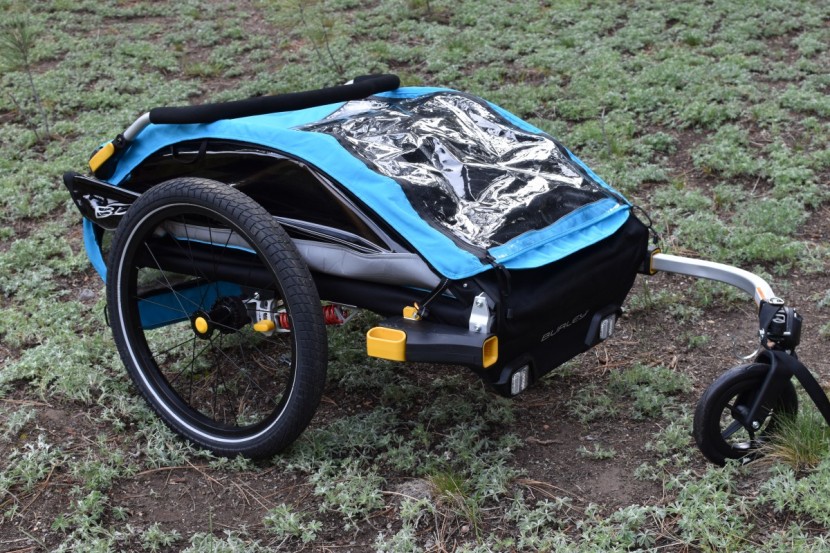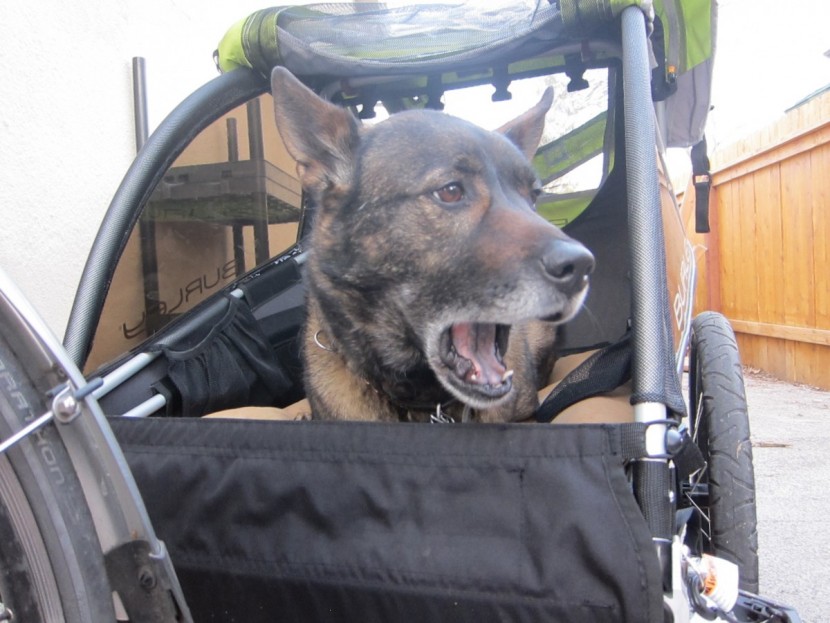With so many bike trailers to choose from, it's a daunting task to figure out which ones are up to snuff. There's no shortage of information from the manufacturers, but it takes an objective, side-by-side comparison out on the road, bike path, and trail to truly separate the wheat from the chaff. To assess which trailers are truly outstanding and which just look good in marketing photos, we ran them through a gauntlet of tests to check them out for ourselves. First, we researched the 40 best-rated trailers on a variety of platforms and pored through thousands (yes, thousands!) of user reviews to narrow down the field to the 9 best trailers at a range of price points. Then, we hauled those trailers for hundreds of miles in a variety of conditions and tested every metric we could think of. Read on to see how we evaluated the trailers in each of our five review categories.
Protection
Keeping our kids safe is always the top priority, so we scrutinized each trailer throughout our testing process to assess their ability to keep passengers out of harm's way. First, we confirmed that each of the trailers tested meets the standards set by the American Society for Testing and Materials (ASTM). The ASTM sets the industry baseline for what is safe and what isn't, subjecting trailers to all kinds of abuse including dropping them from heights, rolling them over, and putting repeated stress on moving parts. None of the trailers we tested had any problems here, and all passed the ASTM safety tests.
The ASTM standards are a baseline, and the best bike trailers go well above and beyond. With precious cargo in tow it's essential to know how well each trailer really protects its passengers, so we analyzed each trailer's structural frame (the roll cage), checking whether the top, sides, and bottom of the trailer are truly going to stand up to punishment. We also looked closely at how secure the each harness system is and assessed how much ventilation is available in each passenger area. We also paid close attention to how well each model protects kids from environmental hazards like sun, wind, cold, and rain, noting whether or not each trail comes with a built-in shade, adjustable rain shield, and/or UV-resistant windows to protect little ones from anything you might encounter out on your adventures.
We performed two more tests without passengers present to determine the trailers' responses to extreme conditions. First, we blasted each trailer with a sprinkler and hose for five minutes to simulate biking in a downpour, placing the sprinkler head strategically to mimic road slick coming off a bike's back wheel. We then scrutinized the interiors to see if and where they leaked. Second, we constructed a dummy passenger out of a Camelback and a G-force recorder and rode each trailer off-road to measure which products really delivered the smoothest ride.
Passenger Experience
We measured each trailer's interior dimensions to determine how much vertical and horizontal room passengers have. We also took notes on the seat and harness padding and the position of the seat in the trailer. Finally, we wrangled some passenger testers and started riding! Throughout our test rides, we asked specific questions and noted the passenger's verbal response and non-verbal reactions to each aspect of the trailer: Could they climb in and out on their own? Was any part of the loading or unloading experience frightening for them? Once we got moving, we had friends ride along to observe our passengers and see if they were shifting uncomfortably in their seats, getting jostled with every bump in the road or being otherwise tormented by the trailer. We interviewed our testers after each ride, and while sometimes they simply demanded cookies, other instances provided useful feedback about everything from pocket placement to quality of construction.
Biker Experience
To evaluate the experience of the person pulling the trailer, we rode with each trailer, a lot! We hauled them around town, along trails and up and down the biggest hills we could find. We took them out in all weather conditions, putting between 50 and 100 miles on each trailer in an effort to sniff out problems that might arise from repeated use. As we rode, we paid special attention to any distracting elements, such as noise, or issues that might cause us to have to stop and readjust the set up. We observed whether there was lurching, vibrating or other feedback conveyed from the trailer to the bike in various conditions, from standing up on hills to rolling over rocky trails. We also spent time on foot, rolling the bike through tight spaces and around obstacles with each trailer attached to assess their maneuverability.
Finally, we weighed each trailer using our own in-house scales to confirm the manufacturers' claims. Hauling a heavy trailer with a kid and cargo up a steep hill is no joke. We included this important metric for those looking to lighten their load.
Ease of Use
To assess the user-friendliness of the trailers we tested, we tracked how long it took to assemble them out of the box following the manufacturers' instructions. Once the trailers were fully assembled, we measured the time it took to get them from their stowed positions, folded up but with wheels and tow arm attached, to hooked up to the bike and ready to roll. During setup, we noted “points of pain,” like stiff frames, D-clips that pinched our fingers and hitches that needed to be muscled into place. No one wants extra hassles to deal with when you're trying to get moving with a grumpy kid on a cold morning.
We also measured breakdown time and noted how easy it is to store each trailer between uses. Can they stand up in the folded position or do they need to be stored horizontally? Are they super bulky or will they fit into a nook in your garage? Finally, we took a close look at the hitch mechanism for each trailer. In our experience, the way a trailer connects to the bike can make or break a ride, sometimes literally. We assessed which hitches were simplest to connect and disconnect, which gave us trouble with bike alignment, and most importantly, which hitches truly fit a wide variety of bikes.
Versatility
We measured the width (side-to-side) and depth (front-to-back) of the dedicated cargo space in each trailer, and noted if there were any limits on cargo area accessibility (like the smaller cargo opening for the Weehoo WeeGo or the reclining seats on the Burley D'lite) or functionality (like the cargo pocket in the Thule Chariot Lite, which doesn't have a flat bottom). We also noted whether each trailer's interior can be reconfigured, often by laying the seats flat, to accommodate different hauls. We towed everything we could think of in the trailers, from groceries to potluck dishes to camping equipment, to assess each one's ability to handle various weights and to keep cargo secure in place. Our quasi-willing canine testers helped us assess each trailer as a dog chariot, which is the fate of many trailers after kiddos age out of them.
While we focus on each product's performance as a bike trailer in this review, several of them have additional capabilities as strollers, joggers or cross-country ski sleds. We didn't review the trailers in those capacities, but we did note what additional functions each trailer can perform, and whether that requires the purchase of an additional accessory.
